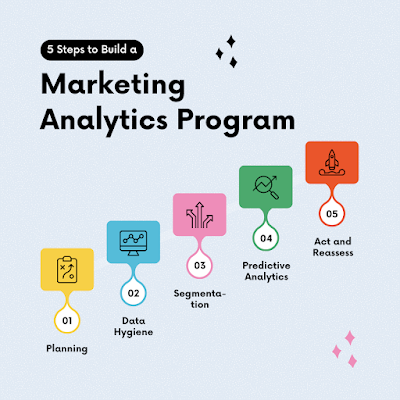5 Steps to Build a Robust Marketing Analytics Program
In today's data-driven landscape, building an effective marketing analytics program is paramount for businesses to make informed decisions and optimize their marketing strategies. A well-structured analytics program can unlock invaluable insights that drive growth and enhance customer experiences. Let's explore the fundamental steps to construct a robust marketing analytics program that propels your business forward.
1. Planning: Establishing the Foundation
The first step in building a marketing analytics program is meticulous planning. Define your objectives, identify key performance indicators (KPIs), and establish the metrics that align with your business goals. Understand the specific areas you want to analyze, such as website traffic, social media engagement, or customer conversion rates. Comprehensive planning sets the stage for the rest of the program.
Example:
Imagine a retail company aiming to increase online sales. Their planning phase involves setting goals, like a 20% increase in online sales within the next quarter, and identifying KPIs, such as conversion rates, average order value, and customer acquisition cost.
2. Data Hygiene: Organizing and Cleansing Your Data
Quality data is the backbone of any successful marketing analytics program. Ensure your data is accurate, complete, and up to date. Organize your data in a centralized system, eliminating duplicates and inconsistencies. Regularly clean and validate the data to maintain its integrity and reliability.Example:
A software company gathers customer data from various touchpoints. They invest in data cleansing tools to remove redundancies and inaccuracies, creating a single, accurate customer profile for analysis.
3. Segmentation: Tailoring Insights for Actionable Strategies
Segmentation involves categorizing your audience into distinct groups based on various criteria such as demographics, behavior, or preferences. Analyze each segment's behavior and response to marketing efforts. This allows you to tailor your strategies for maximum impact and engagement.
Example:
A travel agency segments their audience based on travel preferences, creating targeted campaigns for adventure seekers, luxury travelers, and budget-conscious explorers, resulting in higher engagement and conversions.
4. Predictive Analytics: Forecasting Future Trends
Leverage predictive analytics to forecast future trends and consumer behaviors based on historical data and patterns. Utilize machine learning algorithms to make accurate predictions, enabling proactive decision-making and precise targeting.
Example:
An e-commerce platform analyzes past purchase data to predict upcoming trends and customer preferences. By foreseeing demand for specific products, they optimize inventory and marketing strategies.
5. Act and Reassess: Iterative Improvement for Optimal Results
Implement the insights gained from analytics into your marketing strategies and campaigns. Monitor their impact on your objectives and KPIs. Continuously reassess your analytics program, refine your strategies, and adapt to changing market dynamics to stay ahead of the curve.
Example:
A marketing agency observes increased engagement after implementing insights from analytics into their social media campaigns. They use these findings to further enhance their strategies, leading to consistent growth in online presence and customer interactions.
By following these five essential steps, you can build a dynamic marketing analytics program that transforms data into actionable insights, empowering your organization to make data-driven decisions and achieve substantial business growth.











0 Comments